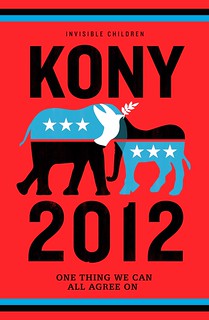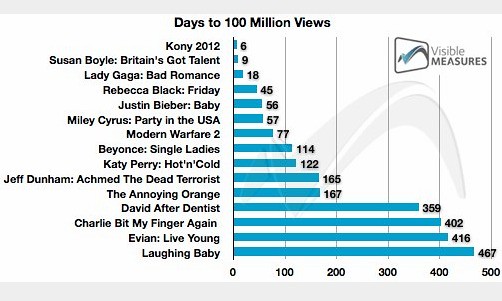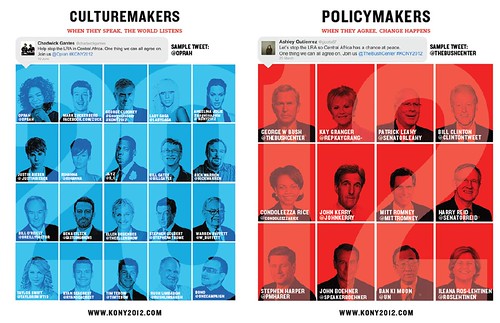Kony 2012: Viral Marketing & Media for Social Change
April 5th, 2012 by
If you haven’t heard of Kony 2012, chances are that you’ve been living under a rock – a rock without Wi-Fi – for the last month. Created by the non-profit organization Invisible Children, the 30-minute documentary about Joseph Kony, an African warlord, became an almost-instant viral video after its debut in March. 
In under a week, it garnered 100 million views, outpacing Susan Boyle’s audition on Britain’s Got Talent and even “David After Dentist.” The difference between this viral video and others is that it has compelled watchers to act in a way that involves more than just forwarding a link.
According to Invisible Children, the goal of the film is “to make Joseph Kony famous, not to celebrate him, but to raise support for his arrest and set a precedent for international justice.” To achieve this, the organization took an unconventional approach. Not only does their marketing campaign include the use of a viral documentary, but also it encourages supporters to take action.

In addition to sharing the video on their own social media networks, viewers were asked to appeal to 20 “culturemakers” like Bill Gates, Mark Zuckerberg, Lada Gaga, and George Clooney and 12 policymakers like Bill Clinton, John Boehner, and Condoleezza Rice do the same. Celebrities including Oprah, Ryan Seacrest, Rihanna, Justin Bieber, and Kim Kardashian all tweeted about the video to their millions of followers, taking the campaign’s virality to a whole new level. According to research conducted by the Pew Research Center’s Internet & American Life Project, over 5.4 million tweets referencing Kony 2012 were posted in the week after it went live.
Becoming an overnight phenomenon, however, was not without its drawbacks. The increased attention for the cause brought with it an increased scrutiny for the organization. Criticisms came from a variety of sources and included everything from oversimplifying the issue to the more serious charge of presenting misleading information.
To make matters worse, following a couple of especially high-profile weeks, Invisible Children co-founder and Kony 2012 filmmaker Jason Russell experienced a very public meltdown, drawing even more negative interest to the organization. Even with the critiques of the video and the ensuing PR nightmare, the marketing impact of the campaign can’t be denied.
The sway of social media influenced millions of people to act, which has not only led to an increased awareness of the situation, but also has resulted in U.S. lawmakers making a political effort. In mid-March, a resolution was introduced in the House that would increase the number of regional forces in Africa to protect civilians and place restrictions on those supporting Kony. Shortly thereafter, another resolution was introduced in the Senate that would support ongoing international efforts to remove Kony and boost U.S. mobility, intelligence, and logistical support of regional forces pursuing Kony.
In addition to achieving their goal of effecting change, Invisible Children’s utilization of an innovative, viral marketing campaign, also had the added benefit of increased brand recognition. The video directed viewers to their website, where supporters could purchase merchandise and download an “Action Kit,” which includes two posters that can be printed and plastered around the U.S. on April 20, as part of their “Cover the Night” event.
 A mere month ago, most people would not have been able to tell you anything about Joseph Kony, much less Invisible Children. Now, both are practically household names. In an effort to make Kony famous, Invisible Children became famous, too. It was a clever marketing tactic that, despite some extremely damaging PR, continues to benefit both the cause and the organization.
A mere month ago, most people would not have been able to tell you anything about Joseph Kony, much less Invisible Children. Now, both are practically household names. In an effort to make Kony famous, Invisible Children became famous, too. It was a clever marketing tactic that, despite some extremely damaging PR, continues to benefit both the cause and the organization.

